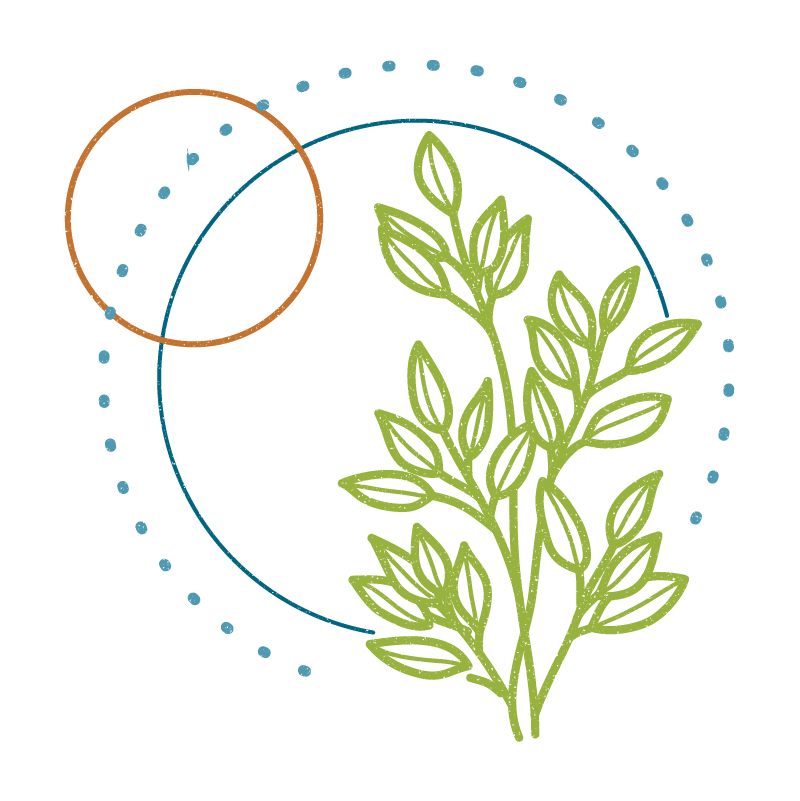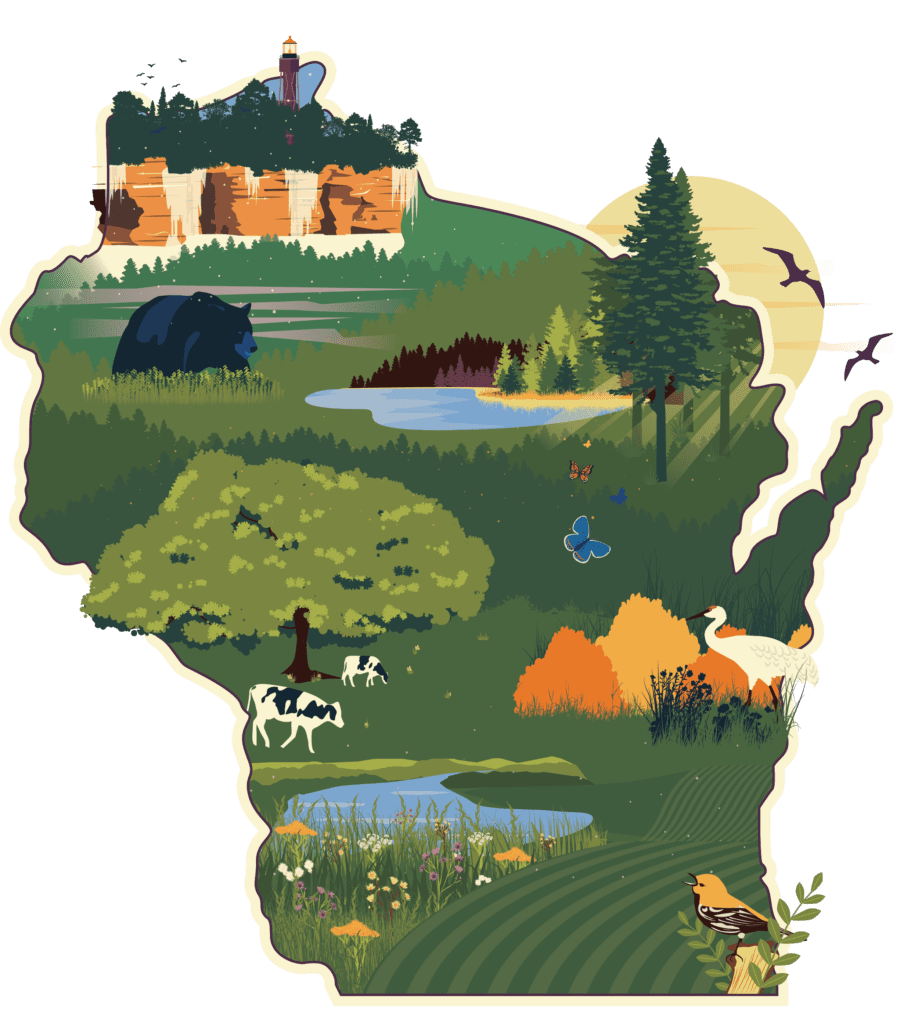Resources for Wisconsin Land Trusts

Wisconsin Model Conservation Easement
The Wisconsin Model Grant of Conservation Easement and Declaration of Covenants offers a guide for discussing and drafting conservation easements.
This model is intended to:
- reduce the time and cost of drafting a conservation easement
- encourage uniformity and improve clarity
- offer a legally enforceable and durable agreement that can be adapted consistent with the parties’ conservation and other goals
- conform to current laws and regulations, including those on tax deductibility, and
- promote best practices
Each easement is unique to the conservation values and characteristics of the land, current and future landowner goals and needs, as well as policies and practices of the land trust, and must be tailored to accommodate these interests and needs. Thus, the Wisconsin model provides a reference and should not be used in lieu of legal review.
The Wisconsin model is the result of dedicated effort by a task force, comprising attorneys and land trust practitioners, who carefully considered structure and language to promote best practices and enforceable legal agreements consistent with conservation goals and current laws.
The Wisconsin model follows the general structure of the WeConservePA model for Pennsylvania and is tailored to Wisconsin law and other local considerations. WeConservePA provides expansive commentary covering alternative and optional provisions and the reasoning behind the structure and content in the Pennsylvania model. The most recent edition of this commentary is available for free download at conservationtools.org.
Landowner Succession
How is Your Land Trust Navigating Landowner Succession?
Effectively navigating landowner succession is a growing concern for land trusts. With some land trusts now 25 or more years old, they are seeing – or soon expect to see – more ownership transfers of easement properties. Succession is clearly on the minds of landowners.
Good successive landowner policies should emphasize how land trusts will maintain positive relationships, timely communications, and respect confidentiality with the current landowner.
Best practices include:
- Learn about potential land transfers through an annual monitoring visit for easement properties. This visit should always include a question to the landowner about any intention to sell.
- If the landowner is considering selling, conduct prospective buyer communications with permission of the owner. Provide background on your land trust, conservation easements, and stewardship practices. Other options include adding a conservation buyer listing on your website or directing landowners/realtors to ConservationSellers.org to list properties.
- If land changes ownership, send the new owner a welcome packet as soon as possible. Meet with them to learn about their plans. Other ideas to keep new landowners engaged include setting up a peer landowner mentor or offering a one-year complimentary land trust membership.
Being proactive helps, but sticky situations can still arise in terms of understanding and compliance with the terms of an easement. When working this out, maintaining a good relationship is key. Consider the messenger for landowner meetings; if possible, include a board member or volunteer who may be relatable.
Realtors are often the first point of contact for buyers, but may have limited familiarity with conservation easements. Some recommendations for reaching realtors and inviting them to help play a role as conservation partners include:
- Accessing realtor groups via local MLS association websites
- Presenting at MLS meetings and participating in continuing education classes
- Offering listing assistance to realtors on your land trust’s website and via social media
Landowner succession resources
Land Trust Standards and Practices Guidance – Practice Elements
Available on The Learning Center
(accessible to Land Trust Alliance members, with log-in)
- 11.D.1 Maintain regular contact with owners
- 11.D.2 Track changes in ownership
- 11.D.3 When the property changes hands
Managing Landowner Succession on Conservation Easements: Recommendations for Conservation Easement Holder Staff
(People, Institutions and Ecosystems Lab, UW-Madison, 2022)
Outlines recommendations resulting from interviews with experts, practitioners, and landowners. Rather than a rigid set of policies, the authors encourage staff to view recommendations as a buffet of choices that can be tailored to fit their organization’s unique circumstances.

Climate Action Toolkit
Gathering Waters created a set of resources available to land trusts to spread the word that land conservation is climate action.
This toolkit shares these graphics, which include an 11 x 17 overview flier, customizable 8.5 x 11 project showcase fliers, and social media graphics, some of which can be customized.
The pieces focus on these six key areas:
- Let the Trees Grow
- Connect Nature’s Neighborhoods
- Farm for Tomorrow
- Care for Wetlands
- Keep it Wild
- Restore Grasslands
Find links for Dropbox and Canva to access these resources below. Click here to download instructions for using the toolkit.

Climate Action Fliers
11 x 17 Flier
Horizontal and vertical fliers are available in Dropbox and are ready to print.
A customizable vertical flier template is available in Canva for you to add your logo and website in the footer. This is the same as the ready-to-print version, but allows you to add the information for your organization.
8.5 x 11 Fliers
Customizable fliers (pictured) are available in Canva for each key area (12 total templates):
- Flier 1: Graphic illustrations with key facts, customizable with land trust logo and website in the footer
- Flier 2: Project showcase, customizable with project title, photo, description, and quick facts, as well as land trust name, logo, website, and email address

Social Media Graphics
Square graphics (1080 x 1080 px) are available in Dropbox. These are ready to use and feature each of the six key areas. There are 33 total that can be mixed and matched.
Customizable square graphics (1080 x 1080 px) are available in Canva in a variety of templates for each of the six key areas. You can feature a project, key fact, or just add your land trust name and logo. There are six customizable templates available.
These graphics are sized for Instagram specifically, but can be used interchangeably on both Facebook and Instagram. We recommend scheduling posts with the same graphics for both platforms through Meta Business Suite.
Need tips on social media? Contact Amanda at amanda@gatheringwaters.org.
Additional Resources
Learn about nationally agreed guidelines for land trusts and access resources to help you identify best practices and answer your questions about land trust operations.
Land Trust Alliance Resource Center
LTA members, be sure to create an account and access a collection of land trust resources and guidance.
Land Trust Standards and Practices
Land Trust Standards and Practices are the land trust community's commitment to excellence. Nationally, land trusts have established a set of guidelines for how to run a land trust responsibly--legally, ethically and in the public interest, with a sound program of land transactions and land stewardship.
Land Trust Accreditation
Land Trust Accreditation is a mark of distinction, showing that a land trust meets high standards for land conservation.
Gathering Waters serves member land trusts across the state. To become a member, or for more information, please contact us.




